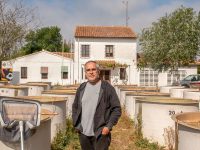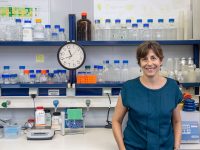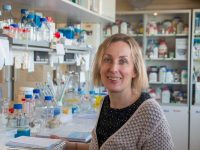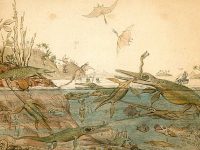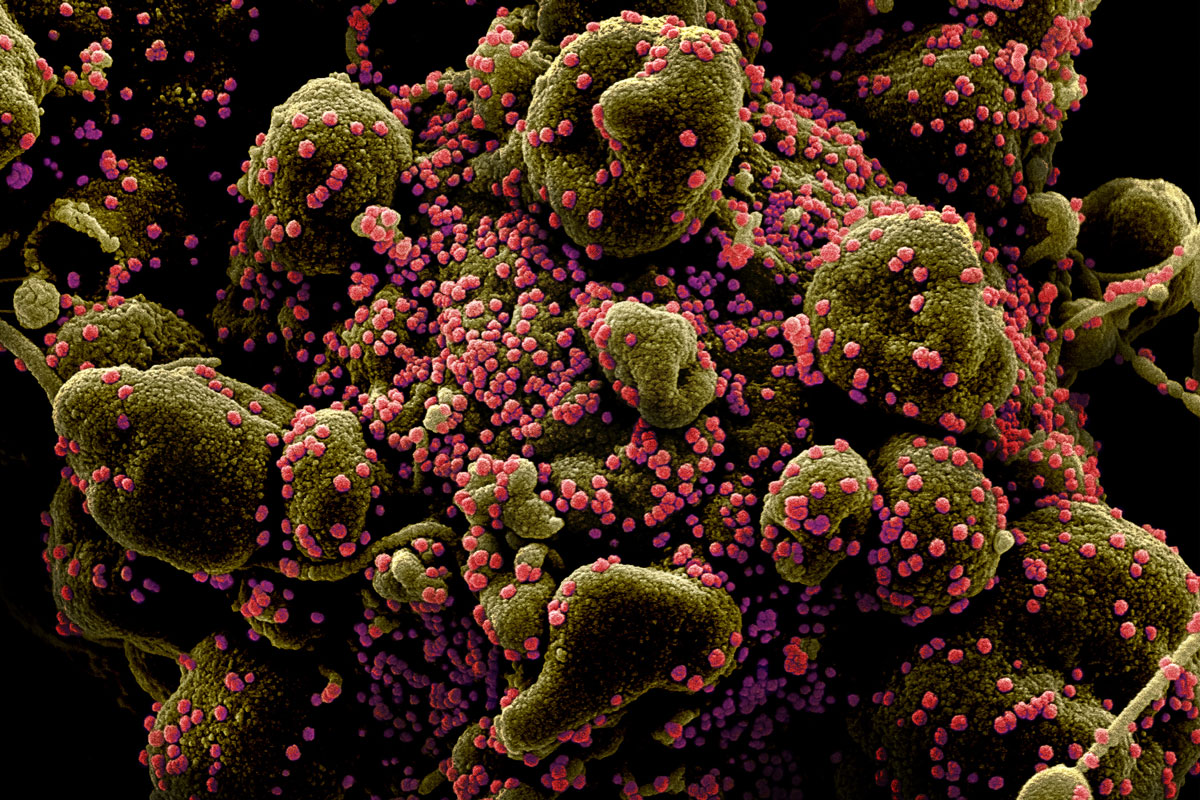
Life appeared about four billion years ago. Perhaps some molecular bubbles began to make copies of themselves in a pool of warm water, as Charles Darwin dreamed. Thus emerged a historical continuity, a vertical transmission, from parents to children, of the genetic instructions of these primitive systems. But soon information was exchanged between different lineages, in a horizontal transmission of genes.
Vertical and horizontal gene transmissions are two sides of the same evolution. The vertical one is a fundamental pillar of the theory proposed by Darwin, what he called «the principle of divergence». This genealogical transfer of genetic information is the basis of the arborescent relationship between living beings: any evolutionary lineage is related to others through a common ancestor located at the point of divergence of the two branches leading to them. Thanks to sequencing techniques and computer analysis of genes and genomes, we can go much further than Darwin. Today we extend this comparative biology to any living being, including the simplest single-cell organisms or prokaryotes (archaea and bacteria). Darwin’s great hypothesis is confirmed as a result of reading the genomes phylogenetically: all life on earth shares a last universal common ancestor or LUCA.
The horizontal transfer of genes and genomes is part of the nature of things and, of course, the contemporary canon of evolutionary biology. Lynn Margulis contributed, in the second half of the last century, to the natural acceptance that in addition to the vertical transfer of genetic information, life is promiscuous and exchanges information between lineages quite easily. Sometimes this happens between organisms that are very removed from each other in evolutionary terms, as in the origin of complex cells with nuclei, or eukaryotes, when a bacterium and an archaea joined their destinies and generated a diversity of complex beings including, among many others, fungi, plants, and animals.
From the depths of geological time, all of this cellular, prokaryotic, and then eukaryotic evolution has been accompanied by viruses, a universe of evolutionary entities with the ability to enter cells, parasiticise their metabolic machinery and make copies of themselves. Perhaps since LUCA, if not before, this exchange of genes through viruses has accompanied cellular evolution: archaea, bacteria, or eukaryotic viruses are known and constitute a fabulous diversity (the virosphere or viroma) as yet unexplored.
Viruses have played a crucial role in evolution, as evidenced by the imprints they have left embedded in cell genomes. The human genome contains three times more viral sequences than human genes. But we also want to learn about viruses as a cause of disease, in humans and in many other organisms, such as domesticated plants and animals. If there is one thing that viruses have in common it is their extraordinary ability to mutate. Viruses accumulate genetic changes at great speed, sometimes running on the edge of extinction. In this exploration of diversity, viruses can “learn” to jump from one species to another. To do this, the virus must accumulate mutations that allow it to recognise the cells of another species, but obviously there must also be physical contact between individuals of those species. In the case of humans, we speak of zoonoses when a jump occurs from another animal species to ours, which leads to the emergence of a new human disease. This emerging disease can take on epidemic proportions if the virus also achieves a good transmission rate among humans.

Humanity is facing fabulous challenges in the Anthropocene, such as the climate crisis or the emergence of new diseases which, thanks to air travel, rapidly become global. / Alex, available at Pexels
Just as endocannibal practices responsible for the transmission of a serious infectious neurological disease transmitted by proteins called prions (kuru) were eradicated in New Guinea in the 1960s, we may wonder whether human promiscuity regarding wild animals, associated with certain traditions or with ecosystem predation, could be eliminated to reduce the risk of zoonoses. The coexistence of humans with birds in Southeast Asia, the marketing of non-human primates in tropical Africa or the trafficking of a huge diversity of wild animals associated with Asian culinary and medical traditions have been the scenario of zoonoses described in recent decades. A recent study shows a correlation between the overexploitation of ecosystems, with the consequent loss of biodiversity, and the emergence of new viral diseases (Johnson et al., 2020). And the zoonotic origin of many viruses, such as the one that causes AIDS, the Ebola virus, or those that cause respiratory diseases, such as severe acute respiratory syndrome (SARS), has been amply demonstrated.
The new coronavirus (SARS-CoV-2), the cause of the COVID-19 pandemic, is the result of natural evolution from wildlife coronaviruses, as shown by the detailed study of its genome, which makes it highly unlikely that it is the result of laboratory experiments (Andersen, Rambaut, Lipkin, Holmes, & Harry, 2020). Despite the remaining doubts, current scientific evidence points to the Huanan seafood market in Wuhan as the focus of the first infections: two-thirds of the first 41 hospitalised patients had visited the market. In this market, the combination of humans and wild animals was spectacular. SARS-CoV-2 is related to bat coronaviruses, but its leap from the Malaysian pangolin is still under suspicion. Several species of pangolin are endangered and subject to illegal trafficking in Asia. Bats, on the other hand, have long been recognised as major reservoirs of zoonotic viruses, and of coronavirus in particular, in several parts of the world (Calisher, Childs, Field, Holmes, & Schountz, 2006).
The World Wildlife Fund (WWF) has called for the closure of all markets that profit from illegal wildlife trafficking. On 24 February 2020 the Chinese government announced a ban on the consumption of non-aquatic wild animals (Ye wei cuisine, a snobbish trend among China’s burgeoning upper-middle class). However, their trade related to traditional medicine is still allowed, a window through which a potential future pandemic may slip through. Of course, the alleged «medicinal» use of pangolin scales or bat droppings will not help prevent this.
Humanity is facing fabulous challenges in the Anthropocene, such as the climate crisis or the emergence of new diseases which, thanks to air travel, rapidly become global. As Sir Martin Rees (2018) states, we have nowhere to hide if there is a pandemic or a collapse of the economy or food supply. To face these challenges, we need to rethink many aspects of our daily lives, of our values, of our economic and cultural practices; in short, of our coexistence with the rest of nature and, especially, of our respect for non-human animals. Life is promiscuous and this has shaped biodiversity throughout evolution, including humans. But our responsibility as a conscious species is to prevent the dark side of such promiscuity from causing preventable harm and pain. Let us learn from the COVID-19 pandemic to anticipate the next zoonosis, which, who knows, may be even more devastating.
References
Andersen, K. G., Rambaut, A., Lipkin, W. I., Holmes, E. C., & Harry, R. F. (2020). The proximal origin of SARS-CoV-2. Nature Medicine, 26, 450–452. doi: 10.1038/s41591-020-0820-9
Calisher, C. H., Childs, J. E., Field, H. E., Holmes, K. V., & Schountz, T. (2006). Bats: Important reservoir hosts of emerging viruses. Clinical Microbiology Reviews, 19, 531–545. doi: 10.1128/CMR.00017-06
Johnson, C. K., Hitchens, P. L., Pandit, P. S., Rushmore, J., Evans, T. S., Young, C. C. W., & Doyle, M. M. (2020). Global shifts in mammalian population trends reveal key predictors of virus spillover risk. Proceedings of the Royal Society B, 28720192736. doi: 10.1098/rspb.2019.2736
Rees, M. (2018). On the future. Prospects for humanity. Princeton University Press: Princeton and Oxford.


